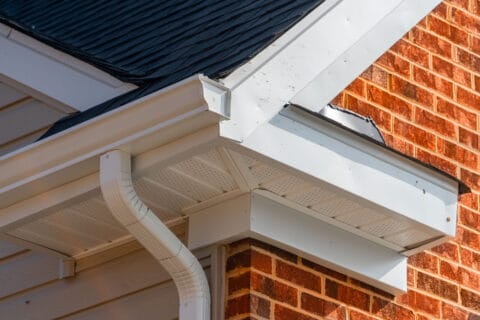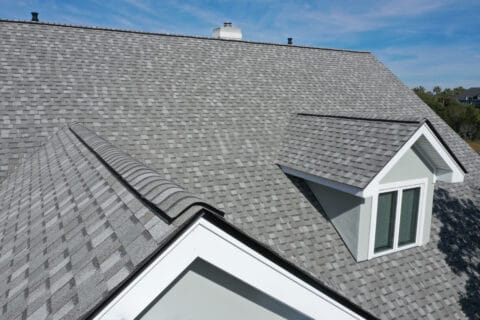How to Prevent and Safely Remove Ice Dams from Your Roof
 Revised by Bruce Hulse
Revised by Bruce Hulse
Ice dams are a common winter challenge for many homeowners, especially in regions with heavy snowfall like Ottawa. They form when snow on the roof melts and refreezes at the edges, creating a ridge of ice that blocks water from draining. Left unchecked, ice dams can cause water leaks, shingle damage, and even structural issues inside your home. Understanding how they form, the risks they pose, and the safe ways to remove and prevent them is essential for protecting your home during winter.
Essential Points at a Glance
| Topic | Key Takeaways |
| What Ice Dams Are | Ice ridges formed by melting and refreezing snow at roof edges. |
| Main Causes | Poor insulation, inadequate ventilation, clogged gutters, roof design flaws. |
| Risks | Shingle damage, roof leaks, interior water damage, mold growth. |
| Safe Removal Methods | Hot water application, heat cables, snow removal, professional services. |
| Prevention | Better insulation, ventilation, gutter maintenance, roof raking, heat cables. |
| Ottawa Context | Freeze-thaw cycles and heavy snow increase risk of ice dam formation. |
Understanding Ice Dams and Their Formation
Ice dams form when snow melts on the warmer parts of a roof, flows downward, and then refreezes at the colder eaves. This creates a frozen barrier that traps more water, which eventually seeps under shingles. The cycle is often triggered by attic heat escaping through poorly insulated roofs. During Ottawa’s winter, daily fluctuations between mild afternoons and freezing nights can accelerate this melt-and-freeze process.
Snow accumulation also contributes to the issue. A thick snow layer acts like insulation, trapping roof heat and causing the lower layer of snow to melt. When this meltwater runs to the edges of the roof where the surface is colder, it refreezes and thickens the dam. This makes roof snow management an important preventative step.
Causes and Contributors to Ice Dam Formation
Several conditions create the perfect environment for ice dams:
- Inadequate Attic Insulation: Without enough insulation, warm air from the house rises into the attic, heating the roof and causing snow to melt unevenly.
- Poor Ventilation: A well-ventilated attic maintains a consistent temperature. If airflow is restricted, warm spots form, increasing the likelihood of melting.
- Roof Design Flaws: Complex rooflines, valleys, or shallow slopes can trap snow and water, making dams more likely.
- Clogged Gutters: Although not the primary cause, blocked gutters trap meltwater and increase the risk of ice forming at the roofline.
In Ottawa, where roofs experience both heavy snow and sudden thaws, these factors often overlap. Addressing insulation and ventilation first is often the most effective long-term solution.
The Risks and Impacts of Ice Dams
Ice dams pose more than just a nuisance; they can significantly impact your home’s structure and comfort:
- Shingle and Roof Damage: When water seeps under shingles, it can rot decking, loosen nails, and reduce the lifespan of your roofing system.
- Water Leaks Inside Homes: Meltwater forced back under shingles may drip into attics, walls, or ceilings, causing water stains and damaging insulation.
- Mold and Mildew: Prolonged moisture intrusion creates conditions for mold growth, which can affect indoor air quality.
- Structural Strain: The sheer weight of ice buildup places additional stress on roofing materials, sometimes bending gutters or fascia boards.
Homeowners often notice interior leaks or icicles forming along roof edges as early warning signs. Acting quickly helps prevent expensive repairs later.
Safe and Effective Methods for Ice Dam Removal
When an ice dam forms, removing it safely is critical. Some methods homeowners might consider can actually damage roofs, so caution is necessary:
- Hot Water Application: Running hot water over the dam gradually melts it and restores drainage. This should be done carefully to avoid damaging shingles with sudden temperature changes.
- Heat Cables: Electrical heating cables placed along roof edges or gutters can melt channels through the ice, giving water a path to escape. These are especially useful when combined with preventative strategies.
- Snow Removal: Clearing snow with a roof rake reduces the source of meltwater. This is one of the simplest homeowner-friendly techniques, but should be done from the ground to avoid injury.
- Professional Removal: For large or stubborn ice dams, professional services use specialized steam equipment to melt ice safely without damaging the roof.
Manual chipping with axes, picks, or shovels should never be attempted. These methods can puncture shingles, void warranties, and create more long-term damage than the ice dam itself.
Preventative Measures Against Ice Dams
The best strategy is to stop ice dams before they form. Preventative measures focus on keeping roof temperatures consistent and ensuring water can flow freely:
- Attic Insulation: Adding insulation prevents warm air from escaping into the attic, keeping the roof surface cooler.
- Ventilation Systems: Proper airflow through soffit and ridge vents helps regulate attic temperature and reduce uneven snowmelt.
- Heat Cables and Heating Panels: These provide targeted prevention in vulnerable roof areas, though they work best as part of a larger strategy.
- Roof Rakes: Regularly removing snow after storms limits the amount of meltwater that can freeze at the roof edges.
For Ottawa homeowners, prevention is especially important during mid-winter thaws. Even a few days of above-zero temperatures followed by a deep freeze can create prime conditions for dam formation.
Maintaining Gutters to Manage Ice Issues
Gutters play a supporting role in ice dam prevention. When clear, they allow meltwater to drain away from the roof and foundation. When clogged, they act as holding trays for freezing water.
Key practices include:
- Regular Cleaning: Remove leaves and debris before winter sets in.
- Installing Gutter Guards: Stainless steel mesh guards keep debris out while allowing water to pass through.
- Checking for Damage: Ensure gutters are firmly attached and sloped correctly so water flows freely.
Proper gutter care won’t prevent ice dams on its own, but it reduces the chance of water backup and adds an important layer of protection.
Professional Solutions for Ice Dam Management
Sometimes, ice dams are too large or dangerous to handle without expert help. Professional contractors offer:
- Steam Removal: A safe, effective method that melts ice without harming shingles.
- Roof Inspections: Identifying weak points in insulation, ventilation, or roof design.
- Protective Installations: Adding ice and water shields beneath shingles in vulnerable areas, often required by building codes in colder regions.
Working with professionals ensures the problem is solved without causing new issues. For Ottawa homeowners with tall, steep, or complex roofs, professional help is often the safest path.
Expert Tips and Additional Recommendations
Alongside formal strategies, experts suggest a few practical tips:
- Leave a Light Snow Layer: A thin blanket of snow insulates shingles and reduces direct heat loss from the home.
- Use Salt-Filled Socks Cautiously: Placed across dams, they melt small channels for water to escape. However, salt can corrode gutters and shorten their lifespan.
- Long-Term Planning: Consider upgrades like continuous insulation, improved ventilation, and durable gutter systems to reduce the likelihood of ice issues over the years.
Managing snow and ice is not just about one winter, it’s about long-term roof health and home protection.
Conclusion: Protecting Your Home from Ice Dams
Ice dams may be a common winter problem, but with the right knowledge, tools, and preventative measures, homeowners can minimize their risks. By combining insulation improvements, regular gutter care, safe snow management, and professional help when needed, you can keep your roof clear and your home dry even during Ottawa’s toughest winters.
For peace of mind and expert support, Clear Ottawa Windows provides professional gutter and exterior maintenance services tailored to local homeowners. With the right care, you can face winter confidently knowing your home is protected.


